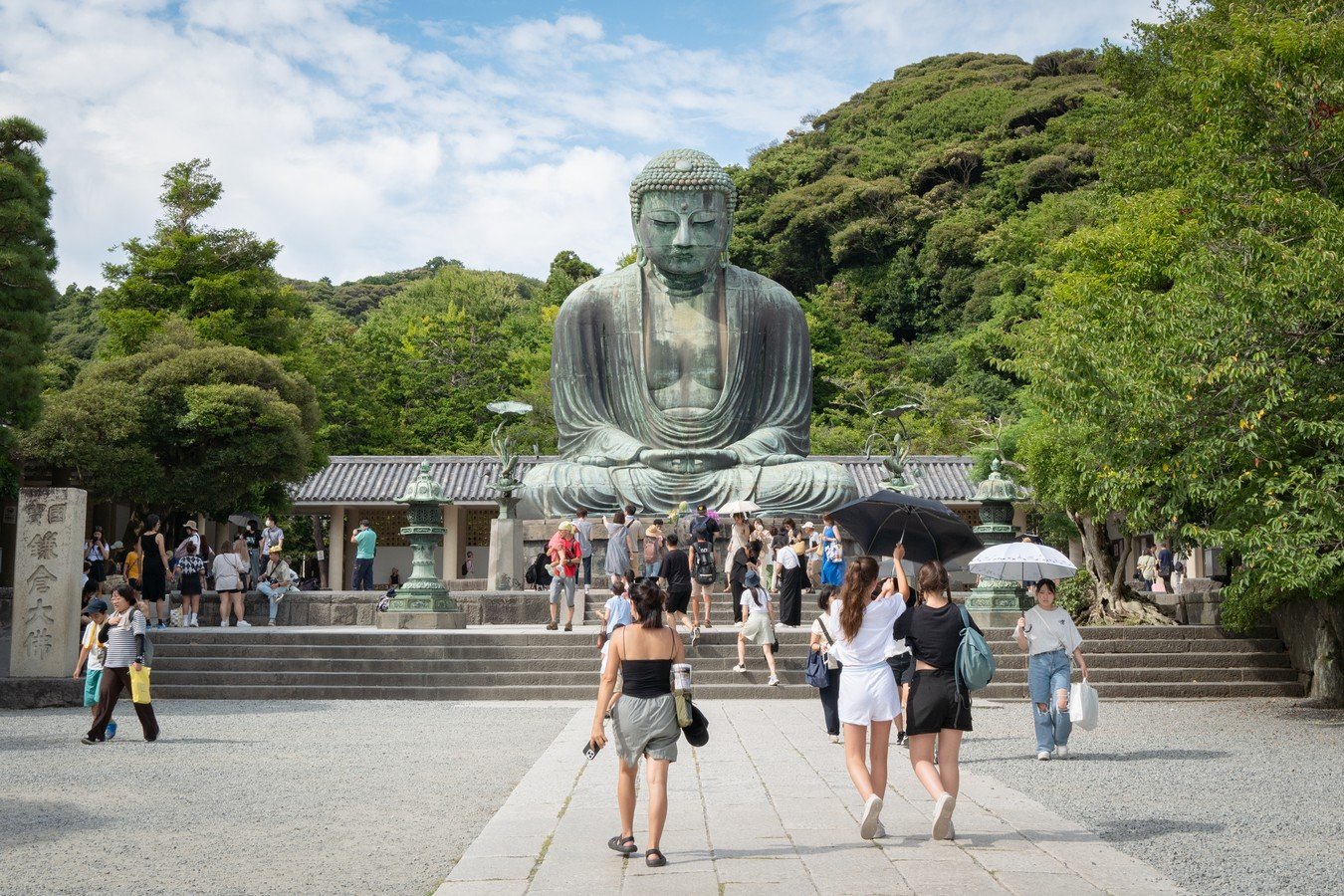Kamakura’s Historical Significance
Kamakura, located in Kanagawa Prefecture, less than an hour south of Tokyo, was the political center of Japan during the late 12th century under the Kamakura shogunate. Founded by Minamoto Yoritomo, it remained influential even after the shogunate’s decline in the 14th century.
Temples and Shrines
Known as the “Kyoto of eastern Japan,” Kamakura is home to numerous temples, shrines, and historical monuments. Among them, the Tsurugaoka Hachimangu Shrine stands out as the most important shrine, dedicated to Hachiman, the patron god of the Minamoto family and samurai. The shrine features a museum, ponds symbolizing rival clans, and hosts events like yabusame (horseback archery).
Coastal Attractions
Kamakura overlooks the ocean, with beaches like Yuigahama offering a summer retreat for swimmers, surfers, and fishermen. Though not equipped for extensive activities, the scenic coast is a short walk from Kamakura Station.
Hokoku-ji Temple
The Hokoku-ji Temple, slightly further from central Kamakura, is renowned for its bamboo forest and gardens filled with seasonal blooms. The hydrangeas in June and the autumn momiji make it a must-visit for nature lovers.



